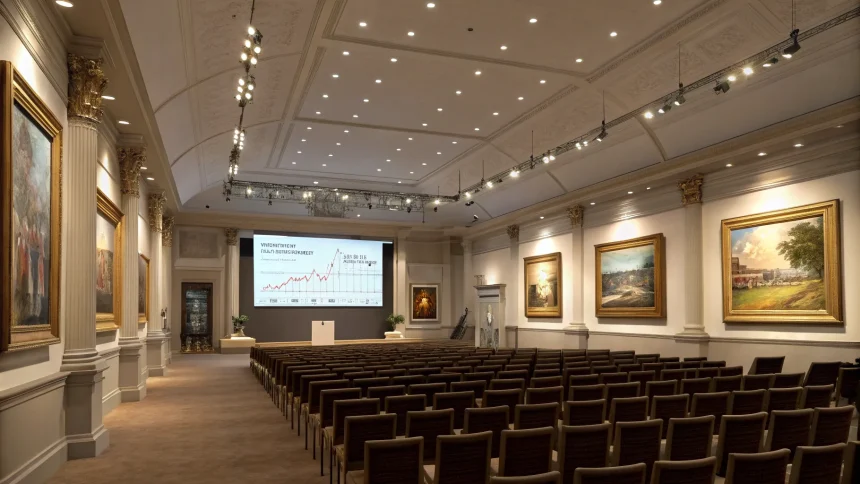Major auction houses reported a decline in sales for the first half of 2023, with combined revenue at Sotheby’s, Christie’s and Phillips falling to $3.98 billion. This represents a 6% decrease compared to the same period in 2022, signaling potential challenges in the high-end art market.
The three leading auction houses, which dominate the global art auction landscape, have experienced their first significant sales decline after several years of post-pandemic recovery. This downturn comes amid broader economic concerns including inflation, interest rate hikes, and stock market volatility.
Market Cooling After Post-Pandemic Boom
Art market analysts suggest this sales dip may indicate a cooling period following the exceptional growth seen after pandemic restrictions lifted. Between 2020 and 2022, auction houses had experienced robust sales as wealthy collectors redirected travel and entertainment funds toward art acquisitions.
“The art market tends to lag behind broader economic indicators by about six months,” said an art market economist familiar with the auction sector. “What we’re seeing now likely reflects economic uncertainty that began late last year.”
Despite the overall decline, certain segments of the market have shown resilience. Contemporary art continues to attract strong bidding, while Old Masters and Impressionist works have seen more selective buying patterns.
Regional Variations in Auction Performance
The sales decline hasn’t affected all regions equally. Asian buyers, particularly from China, have reduced their participation in Western auctions compared to previous years. Meanwhile, Middle Eastern and American collectors have maintained stronger presence in major sales.
Phillips, the smallest of the three major houses, experienced the steepest percentage decline at approximately 9%, while market leader Christie’s saw its sales drop by about 5%. Sotheby’s reported a 6% decrease, aligning with the overall market trend.
Some key statistics from the first half auction results:
- Total sales across all three houses: $3.98 billion
- Year-over-year decline: 6%
- Number of lots sold above $10 million: down 12% from 2022
- Average lot value: decreased by 3%
Outlook for Remainder of 2023
Art market experts remain divided on whether this represents a temporary adjustment or the beginning of a longer downturn. The major autumn sales in New York and London will be closely watched as indicators of market direction.
“We’re seeing more selective buying behavior rather than a full market retreat,” noted a senior auction specialist. “Collectors are still active but more price-conscious and focused on quality.”
Auction houses have responded by being more conservative in their guarantees and estimates for upcoming sales. Some have also increased their focus on private sales, which provide more stability during uncertain market conditions.
The art market has historically shown resilience during economic downturns, though often with a lag compared to financial markets. Ultra-high-net-worth individuals, who form the backbone of the auction market, typically maintain collecting activities even during broader economic uncertainty.
As the fall auction season approaches, market participants will be watching closely to see if this sales decline represents a correction or the start of a more significant market adjustment after years of growth.









